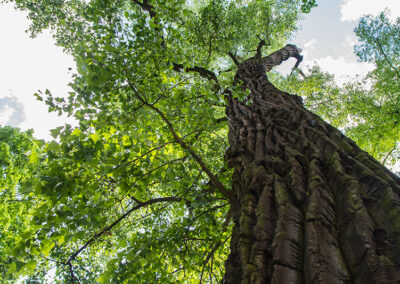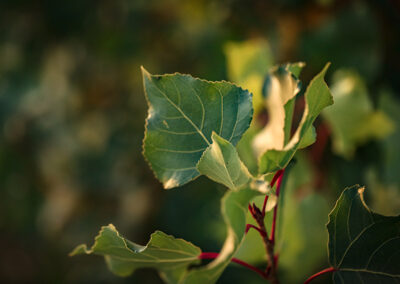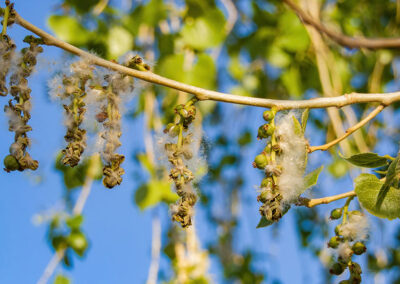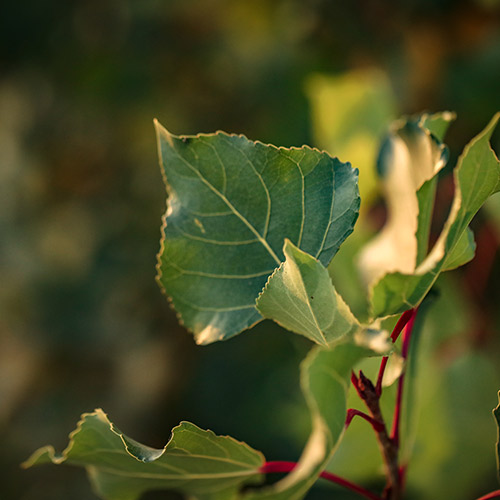
Eastern Cottonwood

Pollen Type: Tree
Cross-Reactivity: Other Cottonwoods, Poplars, Aspen
HS Allergy Extract: Cottonwood, Common or Tree Mix #6 or Tree Mix #11
Family: Salicaceae
Genus/Species: Populus deltoides
Common Names: Common Cottonwood, Eastern Cottonwood, Necklace Poplar
Distribution: Eastern North America from Nova Scotia west to eastern Minnesota and south to Texas and northern Florida.
Locations: Wetter areas along rivers and lakeshores, floodplain forests, coastal plains.
Pollinating Period: June-August
Pollination Method: Wind-pollinated
Description: Eastern Cottonwood is a large, crown-topped, deciduous tree growing over 100’ with a trunk diameter over 6’. Its bark is yellowish-gray when young and becomes gray, rough, and deeply furrowed as it ages. Its bright green leaves are large, triangularly shaped, and irregularly and coarsely toothed. The petioles (stems) are flattened. Male and female flowers grow on separate trees and appear as catkins (slender cylindrical flower clusters). The male pollen-producing catkins are reddish-purple; the female catkins are greenish. Pollination occurs just before the opening of the leaf buds. At maturity, fruit capsules split open to release the seed-embedded cotton, which floats through the air.




